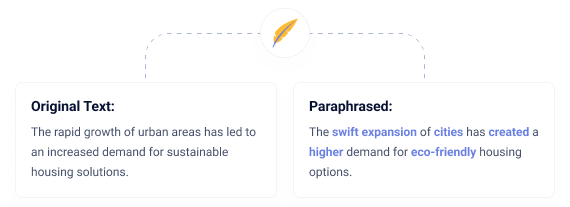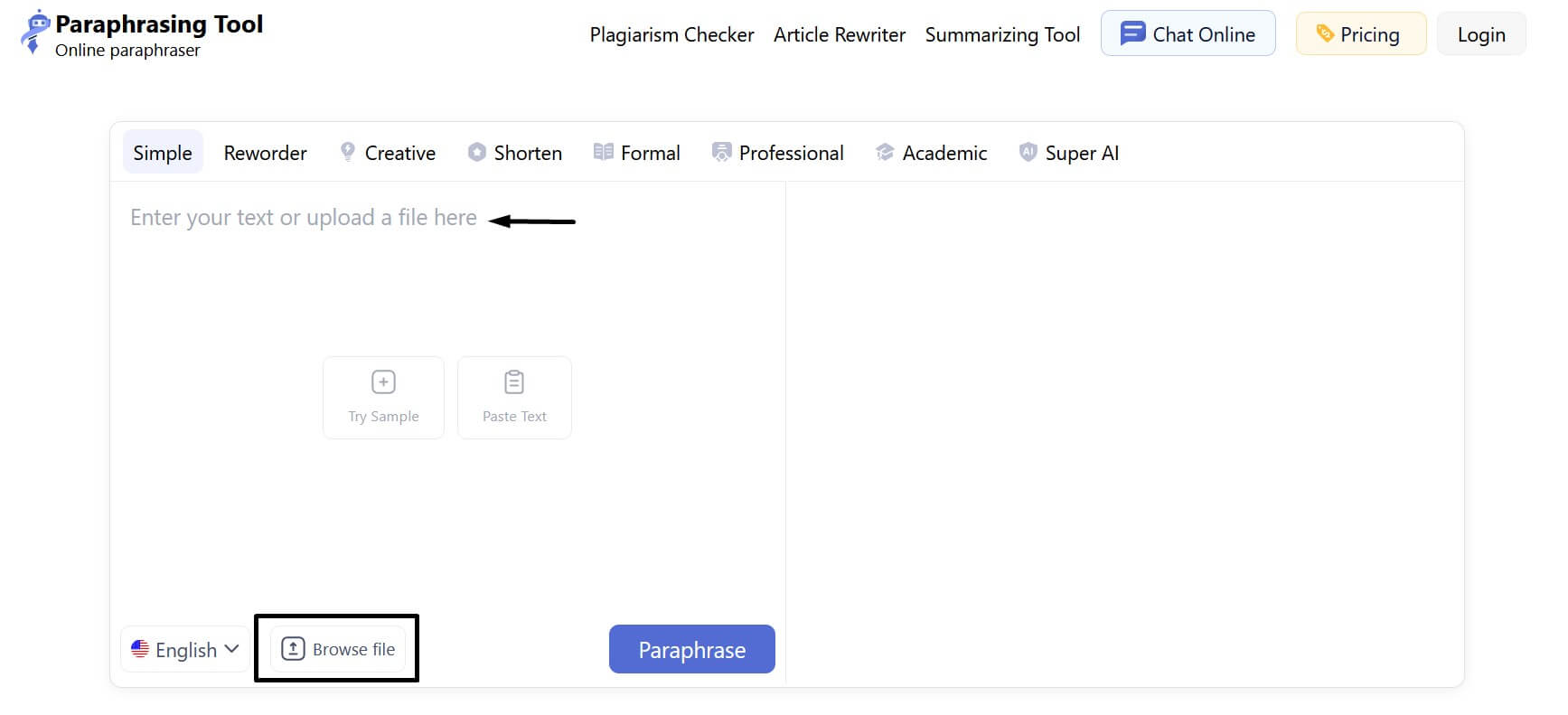Last update Sep 5, 2024

Paraphrasing is an editing technique that is mainly used to enhance the clarity of a text and reduce the risk of plagiarism. It involves stating something in a new and more engaging way.
Learning how to paraphrase correctly, especially for writers, students, and professionals who deal with text, is a must. This is because the advantages are numerous and sooner than later, they might need to employ this technique.
Hence, in this article, we will discuss the general pointers that need to be known to paraphrase text the right way.
The following are some tips that must be considered to make the most out of your paraphrasing efforts.
Before starting to paraphrase the text on hand, it is recommended that you go through it comprehensively. Try to understand exactly what it means and what message it’s trying to convey.
This comprehension will allow you to convey the same idea in a new and better way, without changing the original intent. If you can’t seem to grasp the key points of the text in one reading, give it another go. Do it till you’re confident you’ve got it all.
Another thing that can be done to make this easier is you can divide the text into sections, especially if it’s a long one. Then go through each section one by one while taking breaks. This way, you won’t have to read a huge chunk of text in a single sitting and the overall comprehension will be better.
Paraphrasing includes changing the wording of the text. Many words are swapped with their alternatives. These alternatives are usually more appropriate and simpler than the original ones so that the clarity can be increased.
However, what most people who are new to paraphrasing do wrong is they don’t consider the context while choosing synonyms for words. Be sure that the synonym you choose accurately reflects the original intent of the text. Also, remember that some alternatives might mean more than one thing, so you have to be mindful of them as well.
To exemplify this, we’ll take the following text and synonymize it while keeping the context in mind.

We replaced words like "rapid" with "swift," and "sustainable" with "eco-friendly," keeping the meaning intact while using different terminology.
While paraphrasing, you have to change the structure of sentences in the text. But altering the structure of just a couple of sentences won’t work. You have to do this extensively. The correct way is to change the structure of as many sentences as you can, especially when the text is long.
If this is done right, the paraphrased version won’t have any similarities with the original text. Having said that, the best way to alter structure is to rearrange the order of phrases or clauses in a sentence, or change its voice from active to passive.
For your better understanding, below is a quick example that demonstrates how a sentence structure is changed.

Here, the original sentence is restructured, placing the emphasis on the outcomes (productivity and morale) rather than the action (investing in training).
Sometimes, the original text may contain a sentence that expresses more than one idea or contains multiple clauses. On the other hand, the text may also contain information that is scattered across several sentences.
In the first scenario, it is advisable to not only alter the wording and sentence structure but also to divide it into multiple simpler and shorter sentences. This can enhance comprehension while preserving the original meaning.
Conversely, in the latter scenario, when information is spread across multiple sentences, combining them into a single, cohesive statement can make the content more concise and fluid. This is particularly helpful when the original text is overly wordy or when you want to create a more streamlined narrative.
That being said, below are the examples for both aforementioned scenarios.

In this breakdown, the original sentence is divided into two separate statements. This separation allows each idea to stand on its own, making the information easier to process and understand.

In this paraphrase, three sentences are combined into one, merging the cause with the effects into a single, coherent statement. This not only reduces repetition but also enhances the flow of information, making the overall message more concise without losing any details.
After paraphrasing the content, it's important to review and compare it with the original text to ensure that you have not changed the meaning or left out important information.
One way to do this is by examining the main points or ideas in the original text and ensuring that they are accurately reflected in your paraphrased version. The goal is to maintain the core message while changing the wording and structure.
It's also important to identify areas where your paraphrase may still closely resemble the original text and adjust those parts as needed. Lastly, make sure that no information is added or omitted in the paraphrased version.
If the original text had sources cited throughout it, it is highly important that you do the same. Don’t omit them from the paraphrased version. Proper credit to the original sources of the information always has to be provided. Failing to do so can cause issues of copyright down the line.
Additionally, you must cite the sources using the same style. i.e. APA, MLA, or Chicago, that the original text used. Changing the citation style in the paraphrased content is not encouraged.
Also, apart from in-text citations, if there is a reference list at the end of the original content, you must provide a full reference at the end of the paraphrased text as well. This includes all the necessary details about the source, such as the author's name, publication year, title of the work, and where it was published.
These are some of the general pointers that have to be considered to correctly paraphrase a piece of text. Now before we bring our article to a close, we’d like to mention a quick and reliable way you can paraphrase your content with 100% accuracy.
Manual paraphrasing can be a hectic and time-consuming task, particularly if your text is a long one. This is why, we recommend using our Paraphrasing Tool when you’re in a time crunch.
It uses artificial intelligence and natural language processing to understand the meaning and context of the provided text. Then it synonymizes, alters the sentence structure, and breaks down complex sentences in an instant, leaving you with a perfectly paraphrased version of your text.
The outputs are totally unique so they can be used just as they are or can be kept as a reference point for when you’re manually paraphrasing. You can see how the tool paraphrased content and learn from it.
To use our Paraphrasing Tool, you have to take the following steps.
Input the text that you want to be paraphrased into the provided box. You can do this by copying and pasting it or uploading the file that contains the text.

The tool offers multiple paraphrasing modes, each of which generates different outputs, so select which mode you’d like the tool to work in.

After this, from the bottom of the input box, choose the language of the tool’s output. If you’re inputting text in English and want it paraphrased in the same language, pick English.

Once all this is done, you simply have to click on the “Paraphrase” button and our tool will start processing your text. Then after a couple of moments, an output will be provided. Having said that, the response we got against our text is as follows.

The textual version of our input and the tool’s response are also given below. You can see how accurate the paraphrased version is.

Paraphrasing is a great editing technique used to improve text clarity and avoid plagiarism. Learning to paraphrase is essential for writers, students, and professionals dealing with text, as it offers numerous benefits.
To paraphrase correctly, it is important to thoroughly understand the original text, use synonyms thoughtfully, alter sentence structures, break down or combine sentences for clarity, cross-check with the original text, and cite sources properly.
Additionally, using our Paraphrasing Tool can simplify and speed up the paraphrasing process. Those who are running low on time are recommended to use it.